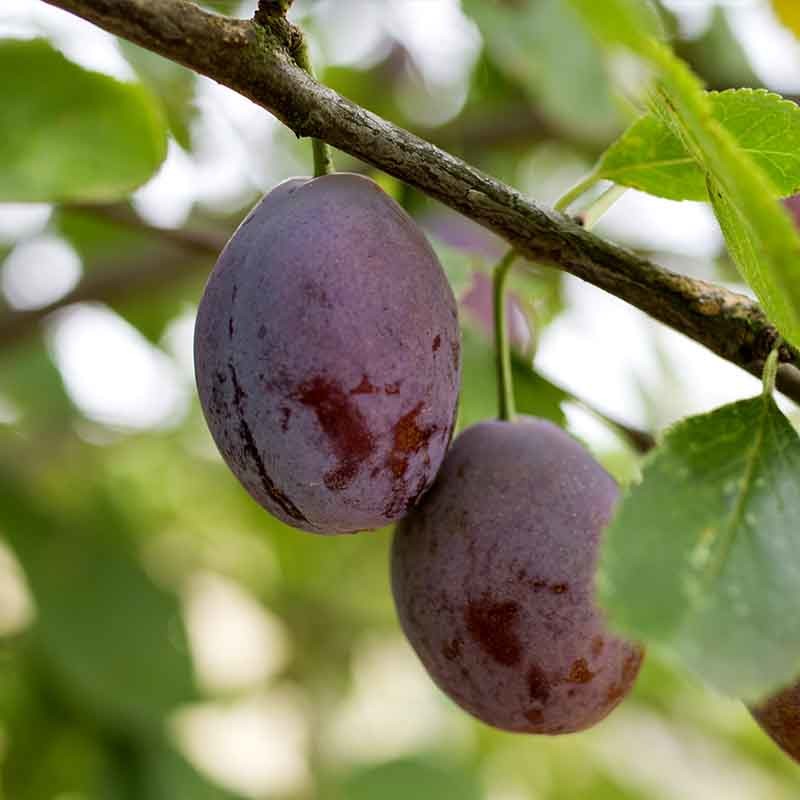
The Chickasaw Plum, on the other hand, self-pollinates to produce abundant fruit that many Native American tribes once relied on as a food source. Autumn brings out red fruit that you or your visiting wildlife can eat, though this plum tree is generally ornamental rather than a fruit-production choice. The Native American Plum delivers abundant clusters of white flowers in spring, then handsome toothed leaves in the summer. If you’re looking for native plants to beautify your integrated ecosystem, the New World plum trees in our inventory are a great choice.

Generally, Japanese plums are larger than European plums, and Japanese plums ripen earlier than their continental cousins. There are two main types of plum trees being marketed today: European and Japanese. Plum trees are fast growing and usually begin producing fruit 3 to 5 years after planting. They are used for making pies, desserts, jams, and jellies. Plums are excellent when eaten fresh and are a great addition in salads. They are low in calories and contain ample amounts of vitamin C, calcium, potassium and carbohydrates. Plums are rich in dietary fiber that is effective in improving digestion. European plums have higher sugar content, so they are often dried and used for making prunes. Most of the plums consumed as fresh fruit and found in grocery stores are Japanese plums.

Today there are more than 200 cultivars being grown all over the world. Those findings lead experts to believe that plum trees were one of the very first fruit trees domesticated by humans.

Archeologists have discovered plum remains in sites of human settlements from thousands of years ago, alongside olives, grapes and figs. Plums are native to China, North America, and Europe.


 0 kommentar(er)
0 kommentar(er)
